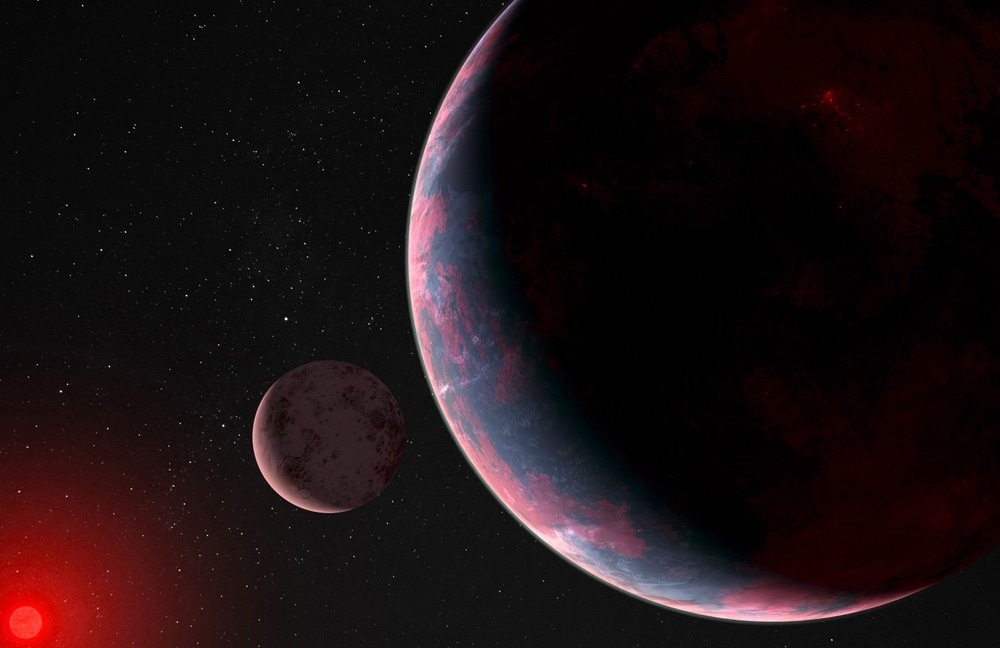The James Webb Space Telescope (JWST) has immensely contributed to the scientific mission of atmospheric characterization of transiting exoplanets. An article recently published in Nature Astronomy reported that the optical properties of organic hazes in water-rich exoplanet atmospheres vary from those formed in nitrogen-rich atmospheres, and this variation in optical properties affects spectral observations of exoplanets, which consequently impacts the current and future interpretations of JWST observations.

Image Credit: TPG85/Shutterstock.com
Optical Properties of Organic Hazes
Organic haze is a colored smog whose formation is driven by a polymerization-like process, as suggested by both modeling and laboratory studies. The optical thickness of organic haze is controlled by factors such as temperature, atmospheric composition, pressure, and energy sources.
The JWST is employed to observe transiting exoplanets and provide information on potentially habitable worlds by analyzing their chemical diversities. Various spectroscopic measurements made on the ground and in space provided substantial evidence of the ubiquitous presence of hazes and clouds in the exoplanet atmosphere.
In the scientific mission of observing the atmosphere of exoplanets, photochemically formed organic hazes serve as the primary target for biosignatures beyond our solar system. The chemical composition and properties of the hazes in exoplanets could be different from those in our solar systems because of varying atmospheric conditions.
The presence of such organic haze alters the emission, reflection, and transmission of the light spectra of an exoplanet, masking the spectral features of water and other gasses. Hence, it is imperative to understand the optical properties of organic haze to accurately interpret exoplanet observations and comprehend their atmosphere. However, owing to lab-based experiments and the lack of well-equipped observations, information regarding haze’s optical properties is limited.
Titan's Unique Haze Amid Atmospheric Diversity
Titan, Saturn’s moon, has been a research interest for a long time, as it serves as an example of the abiotic processing of organic materials. The presence of thick organic haze in the atmosphere of Titan, formed by the irradiation of methane and nitrogen in the presence of sunlight and high-energy electrons, is a captivating feature.
The optical properties of Titan’s organic haze analogues produced in nitrogen-rich environments help interpret the exoplanet observations. However, these properties do not represent the different types of atmospheric hazes that usually occur on exoplanets.
Previous reports suggest that low-mass exoplanets containing water-rich atmospheres are the most common type. The haze formed in these environments has different optical properties and compositions compared to those produced in Titan haze analogues.
Optical Properties of Hazes in Water-Rich Atmospheres
This study was conducted at Johns Hopkins University using a planetary haze research (PHAZER) chamber to explore the optical properties of hazes in water-rich atmospheres by simulating complementary planetary atmospheres.
Here, the optical properties of the haze analogues of the two exoplanets were measured across the wavelength range of 0.4 to 28.6 micrometers. These measurements covered the optical wavelengths of the Hubble and ground-based facilities, along with the wide wavelength range of the JWST.
The results of this study revealed that the optical constant measurements of water-rich haze analogues were considerably smaller than those of their Titan counterpart. However, the extinction coefficient, k, of water-rich haze analogues was larger than that of the Titan haze in the wavelength range of 1 to 2 micrometers.
The increased resolution in the present study and the compositional difference of the sample resulted in better spectral data than Titan’s haze measurements. Later, the simulated transmission spectra of a well-researched temperate exoplanet, GJ 1214 b, was used to test the effect of the optical properties of water-rich haze analogues on exoplanet observations. The measurements thus obtained were better aligned with the Hubble observations than the Titan-like haze analogue data.
Conclusion and Prospects for the Future
Overall, the optical measurements obtained for water-rich atmospheric haze using the PHAZER chamber differed from the Titan haze analogue, implying that changes in the atmosphere influence the optical properties of hazes, affecting their thermal emission, transmission, and reflected light spectra. These differences can be observed using the JWST and Hubble telescopes.
The high spectral resolution of the measurements made in the present study can help observe spectral features to detect the presence of haze and determine its composition. Thus, this study proves that haze particles have compositions specific to the exoplanet atmosphere and thus also have distinct optical properties. Consequently, it is crucial to accurately apply the optical constant of lab-generated haze analogues while studying different exoplanets.
The simulation of haze using optical constants greatly influences the conclusion and can lead to misinterpretation of the data. Thus, in their future studies, the researchers aim to use this approach to measure the haze analogue’s optical constants that are produced in different exoplanet atmospheric regimes.
Reference
Organic hazes will impact JWST observations of water-rich exoplanets. (2023). Nature Astronomy. https://doi.org/10.1038/s41550-023-02141-3
Disclaimer: The views expressed here are those of the author expressed in their private capacity and do not necessarily represent the views of AZoM.com Limited T/A AZoNetwork the owner and operator of this website. This disclaimer forms part of the Terms and conditions of use of this website.